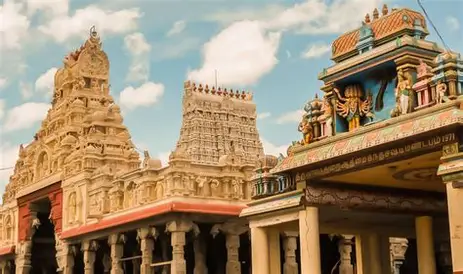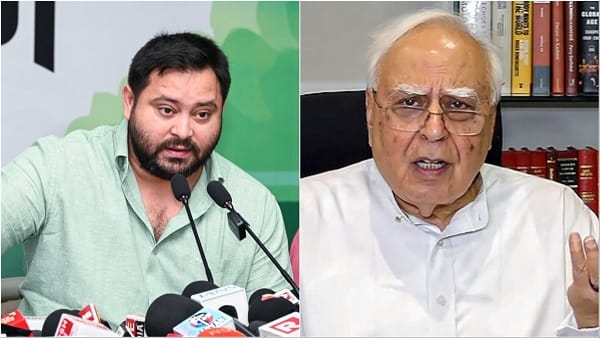
The disputation surrounding the July 7 Kumbhabhishekam (consecration) event at the Sri Subramaniya Swamy Temple in Thiruchendur, Tamil Nadu, has been settled by the Supreme Court of India. The criticism came from the temple’s ancestral religious leader, Vidhayahar, who said that the timing chosen by a five-member committee of Agama experts was not the best “auspicious time” according to his elucidation of Agamic and Vedic principles.
Background of the issue:
In retaliation to differing beliefs, the Madras High Court formed a five-member committee of priests, which included the temple’s ancestral authority, the Vidhayahar, to suggest the auspicious time for the Kumbhabhishekam event at the Sri Subramaniya Swamy Temple in Thiruchendur. The committee advocated that the ceremonial be held between 6:00 and 6:47 a.m. by a vote of 4:1. Citing his traditional soverign and traditional scriptures, the Vidhayahar disagreed and assert for a later time between 12:05 and 12:47.
Later, he disputed both the committee’s creation and its suggestion, saying that three of the five members were unaffiliated with the temple and that the process jeopardized the temple’s unique customs as well as his recognized right to choose ritual scheduling. The panel refused to overturn the High Court’s decision when the case was brought before the Supreme Court under Article 136, arguing that religious authorities and long-standing internal procedures ought to decide what constitutes a “auspicious time” for religious ceremonies.
For any queries or to publish an article or post or advertisement on our platform, do call at +91 6377460764 or email us at contact@legalmaestros.com.
Religious Context:
A basic constituent of Hinduism’s ceremonies and rituals is the concept of a “auspicious time” (shubh muhurta). Promising moments are determined using compound astrological computation, lunar phase, planetary positions, and advice from historic books such as the Panchang (Hindu calendar). By equalizing human behaviour with monstrous forces, these periods are believed to increase the metaphysical effectiveness and positive outcomes of religious activities, including temple rites, marriages, and festivals. Sometimes, such Brahma Muhurta (before dawn), Sandhya (twilight), and Pushya Nakshatra, are highly respected because of their spiritual importance. Varied temples may have varied explanation and application, which often reflect regional norms and the guidance of hereditary priests. The Agamas, the writings that govern temple worship, provide particular rules for ceremonies, such as picking auspicious times.
Legal Context:
Indian courts, chiefly the Supreme Court, have invariably practiced judicial control when it comes to religious ceremonies and establishing auspicious times. The judiciary acknowledge that these problems need specialized understanding of religion and the Bible and are outside the scope of legal adjudication. Courts usually use internal procedures, like priestly expert committees or established temple authority, to settle debates on the scheduling and customs of rituals.
The autonomy of religious communities and the diversity of Hinduism’s customs are respected by this approach, which ensures that doctrinal and ritual disagreements are settled by those with the requisite religious understanding rather than by the judiciary. The Supreme Court’s recent rejection of a determination of the “auspicious time” for a temple ceremony and its endorsement of the Madras High Court’s reliance on an Agama expert committee serve to further this notion of deference to religious authority and internal dispute-resolution processes.
“We cannot decide what is the auspicious time. We could say in future if they should consult with you, form a committee etc,” the Bench observed
The Court further explained that temples should continue to ask the Vidhayahar for his opinion in writing in accordance with the High Court’s order, with the Vidhayahar indicating whether his suggestion is a draft or final proposal.
Court’s Verdict:
The Supreme Court’s failure to determine the “auspicious time” for the Thiruchendur temple’s Kumbhabhishekam serves as further evidence of the judiciary’s restricted role in religious issues, especially when doctrinal or customary understanding is required. The disagreement does bring to light ongoing tensions between institutional procedures and hereditary authorities in temple governance, despite the Court’s assertion that such religious matters are best resolved within the community rather than by judicial order.
Source: Article 136 of The Indian Constitution




